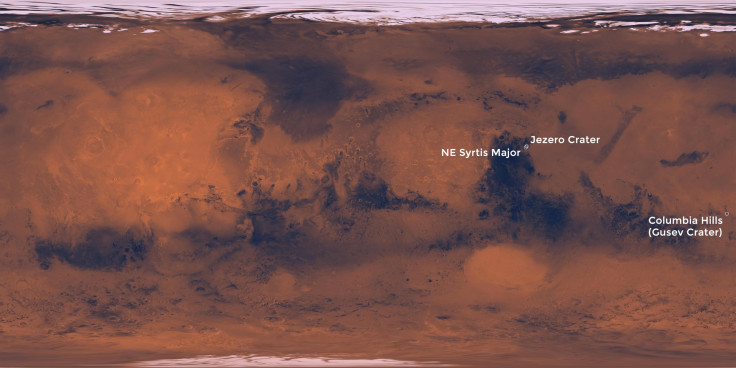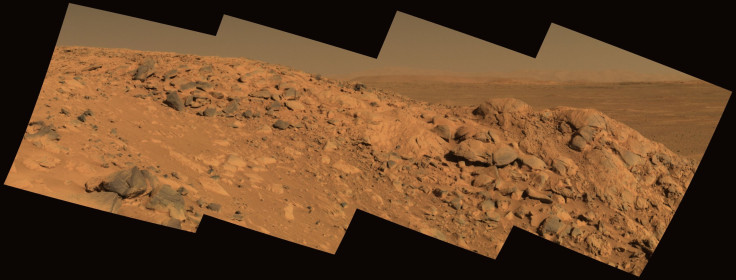NASA’s Mars 2020 Rover Landing Site Narrowed Down To 3 Possibilities

Mars once had water, and could perhaps even have harbored life as we know it. But our knowledge of the red planet is limited to that first assertion being a fact and the second still speculation. And NASA’s Mars 2020 rover is being designed to test exactly that speculation.
In its bid to find evidence of the existence of microbial life on Mars at some point in the distant past, “the Mars 2020 rover introduces a drill that can collect core samples of the most promising rocks and soils and set them aside in a 'cache' on the surface of Mars. A future mission could potentially return these samples to Earth. That would help scientists study the samples in laboratories with special room-sized equipment that would be too large to take to Mars.”
Keeping in mind the relative positions of Earth and Mars, the rover will be launched in July 2020 (aboard an Atlas V 541 rocket from Space Launch Complex 41 at Cape Canaveral Air Force Station in Florida). While the rover is being readied and its parts fine-tuned, there is still a pretty big unanswered question — where does the rover land on the Martian surface, which at just over half of Earth’s radius, is still pretty big for a rover?
At a workshop from Feb. 8-10, scientists working on the Mars 2020 mission narrowed down the list of potential landing sites from eight to three. They based their choices, which could change depending on technological innovations, on a number of factors, such as mission objectives and technological constraints. These included appropriate environmental conditions in the past to support microbial life; a variety of soil and rocks that can preserve chemical or mineral signs of life; and the sites’ suitability for the completion of the rover’s scientific objectives as well as being conducive for it to move around from place to place.

Columbia Hills in the Gusev Crater, where Spirit, an older and now defunct NASA rover, had found evidence of a hot mineral spring, is one of the three candidates.

Jezero Crater was home to a lake on at least two occasions over 3.5 billion years ago, and sediments on the lakebed could still contain signs of microbial life from that time.

Northeast Syrtis, the third potential landing site, was warmed by volcanic activity in the past, and microbes may have existed at the confluence of liquid water and minerals.
The four primary science goals of NASA’s Mars Exploration Program, of which Mars 2020 is a part, are to determine if life ever arose on Mars; characterize the Martian climate; characterize the geology of Mars; and prepare the planet for human exploration.
© Copyright IBTimes 2024. All rights reserved.





















